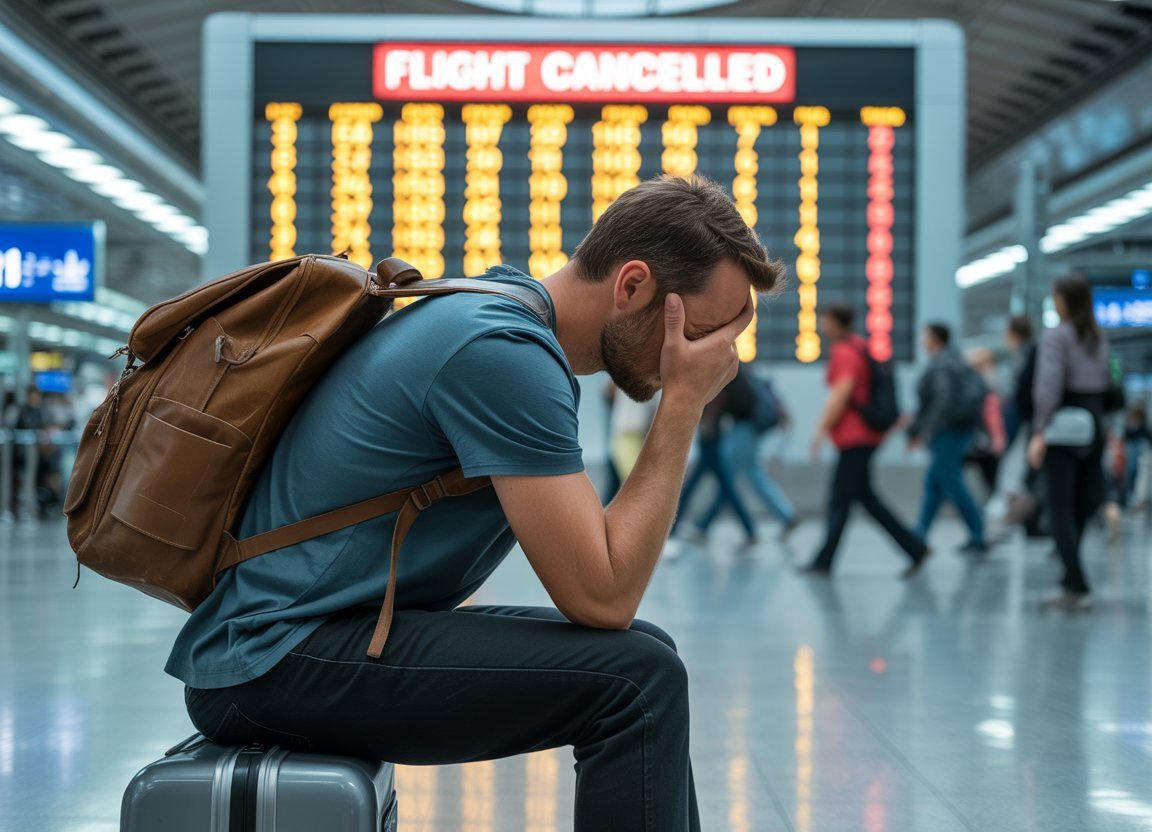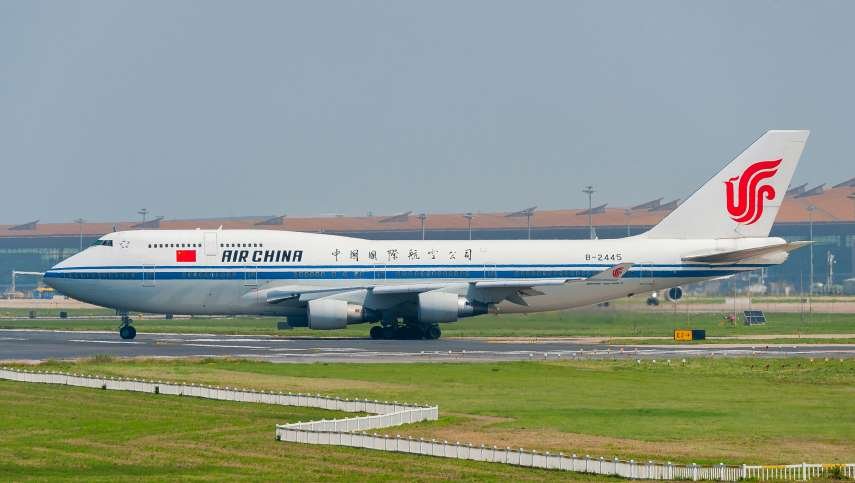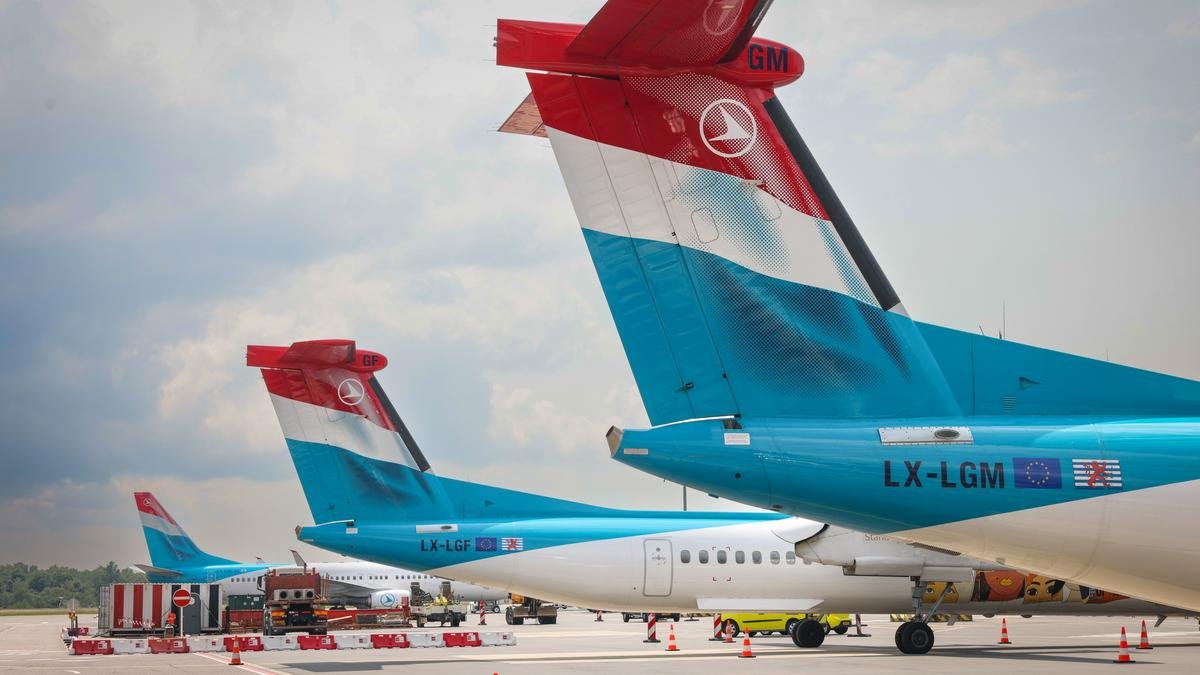Flight Buzz
Booking Flights At 2 AM Will Save You Big Time

At some point, you’ve probably heard that booking flights at 2 a.m. is the secret to finding the cheapest deals. It’s a popular tip that has been circulating by word of mouth and social media for years. But is this advice true, or is it just another believable travel myth? It actually falls somewhere in the middle.
Airfare pricing isn’t random. It’s determined by artificial intelligence (AI) and machine learning systems that adjust prices in real time based on several factors that can change at any moment. While searching in the middle of the night doesn’t guarantee you’ll find the lowest fare, there are a few reasons why late-night searches can work in your favor.
Here are the real reasons why flight prices change, and how night owls might get lucky with a cheap fare if they know what to look for.
Late-Night Flight Searches May Beat The Algorithm
Airlines use dynamic pricing, a strategy that changes ticket prices in real time based on things like demand, competition, and seat availability. These factors can shift quickly, which is why flight prices often change throughout the day.
According to a report from NBC News, because of this strategy, the number of people actively searching for flights can influence pricing. When fewer people are browsing a specific route, prices may dip due to lower demand. On the other hand, if a large number of users are searching for the same destination, even if they’re not booking, it can trigger an increase in fare prices, simply because the system registers a surge in interest.
That’s why booking in the middle of the night, like at 2 a.m., can work in a traveler’s favor. With fewer people online and most corporate bookings happening during business hours, there’s less competition for fares and less activity stimulating the pricing algorithm.
Late-night searches for flights can also line up with airline flash sales – many of which drop just before or after midnight.
Flash Sales Tend To Launch At Midnight
A man and woman booking flight tickets on a laptop.
Many travelers have probably come across a website late at night that’s down for maintenance. This is because companies often schedule updates during off-peak hours, which would include 2 a.m. Airlines follow the same logic when launching flash sales. These limited-time deals offer steep discounts on select routes, are designed to create urgency, and often go live right around midnight.
By rolling out deals when internet traffic is low, airlines can prevent their sites from slowing down or crashing. Midnight is often the start of a new pricing day in many airline systems, which is when scheduled fare updates or flash sales may go into effect. But because airlines operate across multiple time zones, what counts as “midnight” varies. In other words, these updates might appear at different times depending on where you’re searching from.
This is why timing is important in this case. If a sale launches at midnight and only a handful of discounted seats are available, you may still have a chance to grab one by searching shortly after. To improve the odds of booking a flash deal, travelers should find out the airline’s local time zone, set fare alerts in advance, and book directly through the airline’s website instead of on third-party platforms.
Third-Party Booking Sites Can Help Travelers Snag Leftover Deals
The Skyscanner app on a smartphone.
Online travel agencies (OTAs) like Booking.com, Expedia, Google Flights, and Skyscanner are great for comparing fares across multiple airlines, but they don’t always have the most up-to-date prices listed. If you’ve ever clicked on a great deal only to see a higher price at checkout, you’ve experienced this delay in real time.
OTAs use Application Programming Interfaces (APIs) to pull pricing data directly from the airlines. However, depending on the software and how often the data refreshes, the updates don’t always sync right away. As a result, travelers might see a lower fare that’s already changed on the airline’s website.
These leftover fares usually don’t last long, but travelers may be able to book the deal before the system catches up. However, it’s important to keep in mind that the fare might disappear at checkout if it’s already expired.
Does the Day You Book Flights Still Matter?
calendar with pins on certain days
For years, travelers have been told to book flights on a Tuesday to get the best deals. But according to a TikTok video from @cnbcselect, the day you book your flight doesn’t really matter anymore. Because of dynamic pricing and real-time fare updates, cheap tickets can appear any day of the week.
What does matter is the day of the actual flight. Mondays and Fridays tend to be more expensive since business travelers prefer these days. On the other hand, flights that leave on Tuesdays, Wednesdays, and Thursdays are usually cheaper because demand is lower. The time of day a flight leaves also affects the price. Early morning flights are often less expensive because most people don’t want to wake up early to catch them.
Finally, travelers should follow the “21-day rule,” which says that three weeks before departure is the latest anyone should book a flight to minimize unexpected price increases. After the 21-day mark, airlines often raise fares as travel dates get closer.
While there’s no longer a “best day” to purchase a flight ticket, the idea of booking it at 2 a.m. does hold some truth. Booking flights can seem like a guessing game, but understanding how the system works can give you an advantage while searching for the best deal.
Flight Buzz
Delta Air Lines Cancels 14 New Flights Across the US, Japan, Italy, UK, Brazil, South Korea, China, and Singapore, Causing Major Travel Disruption

Published on
August 11, 2025 |
Causing major travel disruption, Delta Air Lines cancels 14 new flights across the US, Japan, Italy, UK, Brazil, South Korea, China, and Singapore. The airline attributed the widespread problems, which began creating a ripple effect of delays and passenger frustration on Saturday and have intensified into Monday, to significant “operational challenges.” Beyond these outright cancellations impacting global hubs on four continents, the issues have cascaded through the carrier’s network, resulting in an additional 277 delayed flights, a figure representing a staggering 7% of its tracked operations during this period.
The effects of this disruption have been felt profoundly, from families trying to return from European holidays to executives on critical business trips to Asia. The problems underscore the fragility of global airline networks in the current climate, where even minor issues can cascade into international meltdowns.
A Global Problem by the Numbers
While the cancellation of 14 flights may seem small relative to Delta’s thousands of daily operations, the strategic importance of the affected routes magnifies their impact. These were not minor regional hops but largely long-haul international flights that serve as critical arteries for global commerce and tourism. Compounding the issue, a staggering 277 additional flights were hit with significant delays, representing 7% of the carrier’s tracked operations during this period. A delay rate of this magnitude can paralyze an airline’s schedule, causing crew members and aircraft to be out of position for their next assignments, leading to further cancellations and delays down the line.
Trans-Atlantic Turmoil: Europe and South America Hit Hard
The highly profitable and competitive trans-atlantic corridor saw some of the most significant impacts. These routes are the backbone of summer tourism and business travel between the United States, the UK, and continental Europe. The disruption also extended to vital links with South America. Affected flights include:
- Flights to/from Italy: DAL231 (Airbus A333) from Rome (FCO) to New York (JFK); DAL289 and DAL9889 (Boeing 763) from Venice (VCE) to New York (JFK).
- Flights to/from the UK: DAL62 (Boeing 763) from New York (JFK) to London Gatwick (LGW) and its return flight, DAL63.
- Flights to/from Brazil: DAL226 (Airbus A339) from São Paulo (GRU) to New York (JFK) and its counterpart, DAL227.
Pacific Pain: Asian Network Sees Widespread Interruptions
Delta’s extensive trans-pacific network, which involves complex logistics and ultra-long-haul flights, experienced severe interruptions. Disruptions here can take longer to resolve due to the vast distances and time differences involved. Major hubs in Japan, South Korea, China, and Singapore were all affected.
- Flights to/from Japan & South Korea: Multiple services connecting Atlanta (KATL), Detroit (KDTW), Minneapolis (KMSP), and Salt Lake City (KSLC) with Tokyo (HND) and Seoul (ICN) were impacted, including flights DAL294, DAL120, DAL158, DAL188, DAL170, and DAL172, primarily operated by the Airbus A359.
- Flights to/from China & Singapore: The disruption touched routes to Shanghai (PVG) from Honolulu (PHNL) and a unique long-haul service from Seattle (KSEA) to Singapore’s Paya Lebar Air Base (QPG), flown by an Airbus A359.
Chaos at Home: US Domestic Routes Affected
Disruptions at Delta’s fortress hub, Hartsfield-Jackson Atlanta International (KATL), and other key US airports like New York-JFK sent shockwaves through the domestic system.
- Key Domestic Links: Flights connecting major hubs like Atlanta, Seattle (KSEA), Boston (KBOS), and Detroit (KDTW) were affected, including DAL9960, DAL9969, and DAL9964.
- Leisure & Regional Routes: Services to leisure destinations like Palm Beach (KPBI) and Honolulu (PHNL), as well as regional routes like Melbourne, Florida (KMLB) to New York’s LaGuardia (KLGA), were also impacted.
Delta Air Lines is causing a major travel disruption across its global network due to “operational challenges.” The issues have resulted in 14 flight cancellations and 277 delays, impacting routes in the USA, Japan, Italy, and beyond.
An Industry Under Strain
These challenges at Delta are not occurring in a vacuum. The global aviation industry continues to face significant headwinds in 2025. Persistent shortages of pilots and maintenance technicians, combined with aging air traffic control infrastructure and unpredictable supply chain issues, have put all major carriers under immense pressure. “Operational challenges” often serves as a catch-all for these deeper, industry-wide problems that leave airlines with little buffer to handle unexpected events.
For the thousands of affected passengers, the situation has meant frustration, long waits on customer service lines, and the difficult task of rebooking on already full flights. Delta has advised all customers with upcoming reservations to proactively check their flight status via the Fly Delta app or the airline’s website before heading to the airport. The airline stated it is working to re-accommodate travelers and get its schedule back on track, but full recovery from a disruption of this magnitude could take several days.
Flight Buzz
Flight Disruptions: 20+ Air China Flights Canceled, Major Routes In Chengdu, Beijing, Guangzhou, Shenzhen Affected

Published on
August 10, 2025 |
On Sunday, Air China announced the cancellation of a number of flights, interrupting travel plans for passengers flying between major cities like Chengdu, Beijing, Guangzhou, and Shenzhen. The disruptions affected key domestic routes with a high volume of flights operating during the morning to late evening.
The impact of these disruptions is being felt by travelers to and from Chengdu Shuangliu International, Beijing Capital International, Guangzhou Baiyun International, and Shenzhen Bao’an International. Air China’s network across China is extensive, and these sudden changes to the flight schedule pose challenges for passengers.
The issue continues to underscore the delicate nature of an airline’s flight schedule—especially during busy travel windows—and calls into question the airline’s ability to respond to unanticipated difficulties.
Flight Cancellations for Air China
The cancellations from Air China impacted several prestigious routes, and for Air China’s passengers, getting to their destinations became complicated. Here, according to government reports, is a list of some of the notable cancellations for Sunday:
The flights CCA4407 and CCA4408 were from and to Chengdu Shuangliu International CTU and Qamdo Bangda BPX, with departure and arrival times of 06:45 and 09:05 AM CST, respectively.
CCA1380 from Guangzhou Baiyun International to Beijing Capital International is also scheduled for 09:25 AM CST
CCA4413 from Chengdu Shuangliu International to Kunming Changshui International, departing at 11:05 CST.
CCA4317 departing from Chengdu Shuangliu International to Guangzhou Baiyun International at 12:05 CST.
CCA1341 from Beijing Capital to Shenzhen Bao’an at 12:10.
CCA1517 from Beijing Capital to Shanghai Hongqiao at 01:40.
CCA4414 from Kunming to Chengdu at 14:00.
CCA1327 from Beijing Capital to Guangzhou at 14:05.
CCA1397 from Beijing Capital to Shenzhen at 14:10.
CCA1718 from Beijing Capital to Hangzhou at 14:40.
CCA4318: Guangzhou Baiyun International (CAN) to Chengdu Shuangliu International (CTU) – 04:05 PM CST
CCA1342: Shenzhen Bao’an International (SZX) to Beijing Capital International (PEK) – 05:10 PM CST
CCA4323: Chengdu Shuangliu International (CTU) to Shenzhen Bao’an International (SZX) – 05:40 PM CST
CCA1518: Shanghai Hongqiao International (SHA) to Beijing Capital International (PEK) – 05:40 PM CST
CCA1723: Hangzhou Xiaoshan International (HGH) to Beijing Capital International (PEK) – 06:10 PM CST
CCA1328: Guangzhou Baiyun International (CAN) to Beijing Capital International (PEK) – 06:50 PM CST
CCA1398: Shenzhen Bao’an International (SZX) to Beijing Capital International (PEK) – 07:10 PM CST
CCA2768: Yiwu (YIW) to Chengdu Tianfu International (TFU) – 08:40 PM CST
CCA4324: Shenzhen Bao’an International (SZX) to Chengdu Shuangliu International (CTU) – 09:40 PM CST
Causes of the Disruption
Although the reason for the cancellations remains unclear, there is a chance it could be linked to the weather, technical difficulties, or delays in the operations. As a result of the size of the domestic network that Air China has, the cancellations create a chain reaction for the many passengers who use these flights to travel to international or regional hubs.
Travelers are advised to contact the airline office for information concerning the rescheduled flights as the situation continues to evolve. Many are now looking for other ways to travel, and for some, trains and buses are a viable alternative.
Passenger and Local Airport Impact
For most travelers, these cancellations are laden with a lot of uncertainty and frustration. Because of the huge volume of passengers being stranded in various airports, local governments and airport authorities are in the process of providing alternative solutions. With the number of people impacted, it is proving to be a major logistical nightmare.
Airports that are typically busy with passengers during peak hours, such as Chendu Shuangliu, Beijing Capital, Guangzhou Baiyun, and Shenzhen Bao’an, are receiving a high volume of inquiries from travelers trying to book new flights or get information on the status of their flights. For some, the process of obtaining alternative flights could take hours or even days.
What is Air China Doing in Response
Air China has committed to helping passengers affected by the cancellations by providing various rebooking options and refunds where such flights are canceled. Passengers who book their tickets from third parties are advised to reach out to their agents for further help.
Moreover, the airline emphasized that it is trying to fully restore operations and deal with the aftermath of any disruptions as soon as possible. The airline is trying to restore the intended operations and cut down any schedule imbalances due to this occurrence.
More About the Consequences for Domestic Flights
The issue of this cancellation has highlighted the weaknesses that exist in the infrastructure for domestic air travel within the country. The expansion of the technology and the travel infrastructure in China has made air travel one of the most affordable, and hence has made the airline sector of the country to grow.
The case with Air China shows that there is ample room for improvement with regard to air travel efficiency and fulfillment of passenger expectations in the aviation industry. The dependence of the airline sector, as well as the travel sector, is on the service that is offered to the passengers through the airlines.
Final Remarks
Therefore, the flight cancellations have affected passengers and travelers who intended to travel to Chengdu, Beijing, Guangzhou, and Shenzhen. There are ongoing worries that in the future, incidents such as this one will occur, which will only flag the unreliability and the chaos that might be in the aviation sector.
With travelers modifying their plans, there is a glimmer of hope that normal operations will resume soon. For now, travelers should pay attention to information given by the airline and the local airports to avoid unnecessary delays.
Flight Buzz
Is Tuesday at 4 a.m. really the best time to book flights? Luxair says no to know about air travel

Booking flights, braving turbulence or wondering why in-flight food tastes so bland –flying comes with plenty of questions. But how many of the commonly held beliefs about air travel actually hold up?
Luxair, Luxembourg’s flag carrier, sheds some light on a few myths and explains what really happens behind the scenes.
The Tuesday-at-4-in-the-morning myth
A persistent rumour claims that flights are cheapest if booked on Tuesdays at 4:00. It’s been passed down in travel forums like gospel. But Luxair isn’t buying it.
“Ticket prices vary depending on many factors: time of year, school holidays and when the purchase is made,” the airline said, declining to confirm the late-night discount legend. Instead, Luxair highlights its last-minute offers as a reliable way to find good fares.
And what about using a VPN to trick pricing algorithms? No luck there either. While using a VPN “has no direct impact” on fares, the airline says browsing behaviour can influence prices. Simply put: if many users are looking at the same flight, seat availability drops – and prices can rise.
Fear of flying? There’s a seminar for that
Whether you tense up during takeoff or avoid flying altogether, Luxair says you’re not alone. If it’s a phobia, it’s best to inform the flight crew. You’ll receive appropriate support. “We can provide caring support and respond with special attention if needed,” Luxair explains.
For more serious cases, Luxair offers a weekend seminar, including sessions with a psychologist, a captain and cabin crew.
Participants learn coping techniques and then take a supervised round-trip flight with the same team. Held six times a year in three languages, the programme has a success rate of over 95%, according to Luxair.
“Furthermore, an independent study conducted by the University of Luxembourg shows that after their participation, over 90% of former participants continue to fly.”
Yes, airplane mode still matters
Mobile phones must still be set to airplane mode during flights, Luxair says, especially during takeoff and landing. Otherwise, they continuously search for a network, which can interfere with aircraft communication and navigation systems.
Wi-Fi on board? It exists, but is only activated after takeoff and deactivated before landing. The service includes either direct internet access via satellite or an Inflight Entertainment system with preloaded movies, games and news.
Why airplane food tastes … meh
Think the food is bland? You’re not imagining it. Reduced humidity and cabin pressure dull your taste buds, Luxair says. Add engine noise and distractions from other passengers, and flavours don’t stand much of a chance.
Chefs compensate with stronger spices and crunchy textures. These techniques can help restore some of the flavour lost at altitude.
Could you land a plane?
A viral survey once suggested nearly half of men – and a quarter of women – believe they could land a plane in an emergency. Luxair’s answer: don’t count on it.
“Piloting and landing an airliner is a complex task that requires years of theoretical and practical training,” the airline said. Pilots are trained for every imaginable scenario and operate under strict European rules.
Their workdays can stretch up to 15 hours, including pre-flight prep, time in the air and post-landing procedures. Minimum rest periods of 12 hours are enforced between flights.
As of 2026, Luxair will fly to more than 100 destinations. Whether you’re a nervous flyer or a self-declared aviation expert, you’ll still need to buckle in – and yes, switch your phone to airplane mode.
Travel from Luxembourg to these destinations by direct flight
(This article was originally published by Virgule. Machine translated by AI, with editing and adaptation by Kabir Agarwal.)
-

 Brand Stories3 weeks ago
Brand Stories3 weeks agoBloom Hotels: A Modern Vision of Hospitality Redefining Travel
-

 Brand Stories2 weeks ago
Brand Stories2 weeks agoCheQin.ai sets a new standard for hotel booking with its AI capabilities: empowering travellers to bargain, choose the best, and book with clarity.
-

 Destinations & Things To Do3 weeks ago
Destinations & Things To Do3 weeks agoUntouched Destinations: Stunning Hidden Gems You Must Visit
-

 Destinations & Things To Do2 weeks ago
Destinations & Things To Do2 weeks agoThis Hidden Beach in India Glows at Night-But Only in One Secret Season
-

 AI in Travel3 weeks ago
AI in Travel3 weeks agoAI Travel Revolution: Must-Have Guide to the Best Experience
-

 Brand Stories1 month ago
Brand Stories1 month agoVoice AI Startup ElevenLabs Plans to Add Hubs Around the World
-

 Brand Stories1 month ago
Brand Stories1 month agoHow Elon Musk’s rogue Grok chatbot became a cautionary AI tale
-

 Brand Stories3 weeks ago
Brand Stories3 weeks agoContactless Hospitality: Why Remote Management Technology Is Key to Seamless Guest Experiences
-

 Asia Travel Pulse1 month ago
Asia Travel Pulse1 month agoLooking For Adventure In Asia? Here Are 7 Epic Destinations You Need To Experience At Least Once – Zee News
-

 Brand Stories1 month ago
Brand Stories1 month agoChatGPT — the last of the great romantics

You must be logged in to post a comment Login